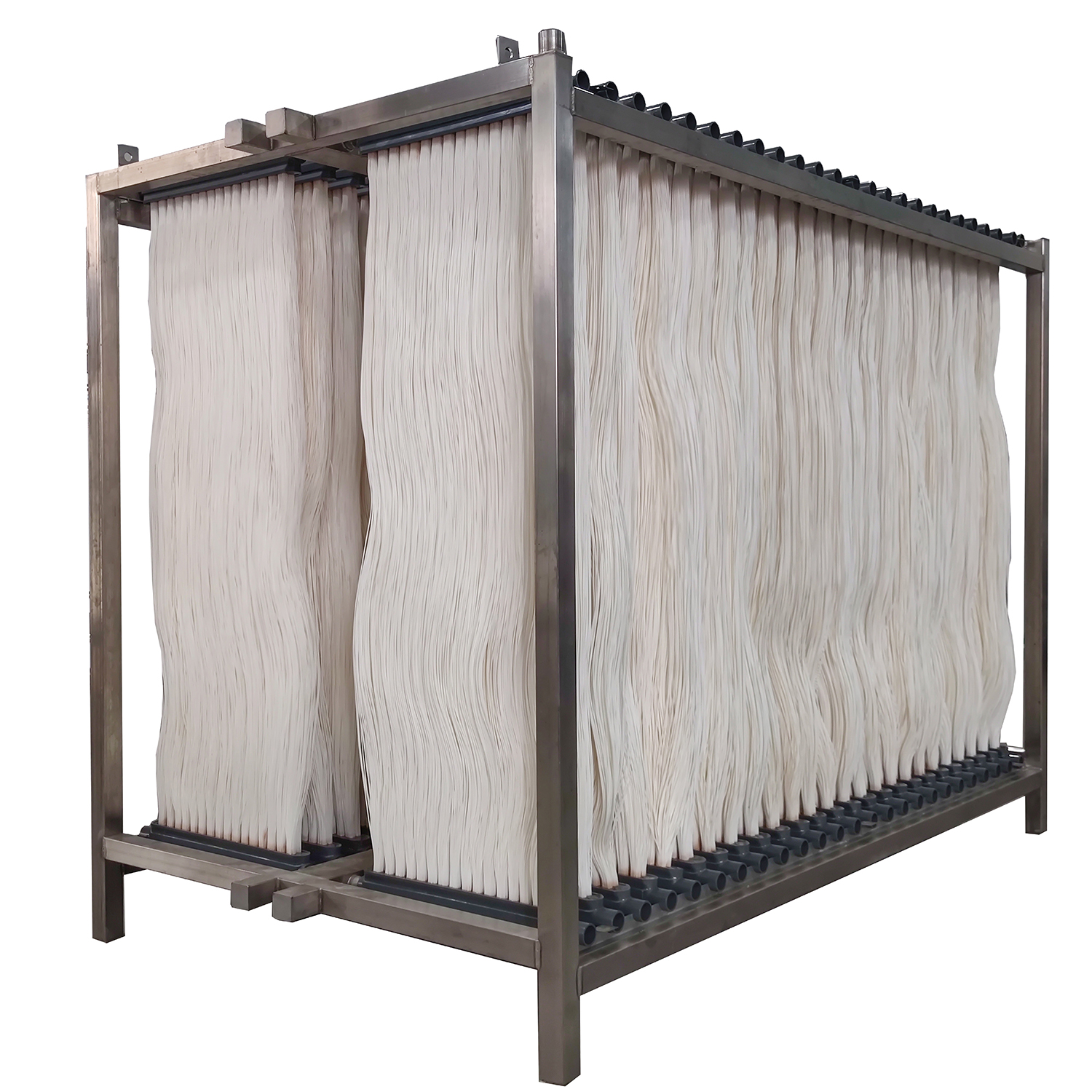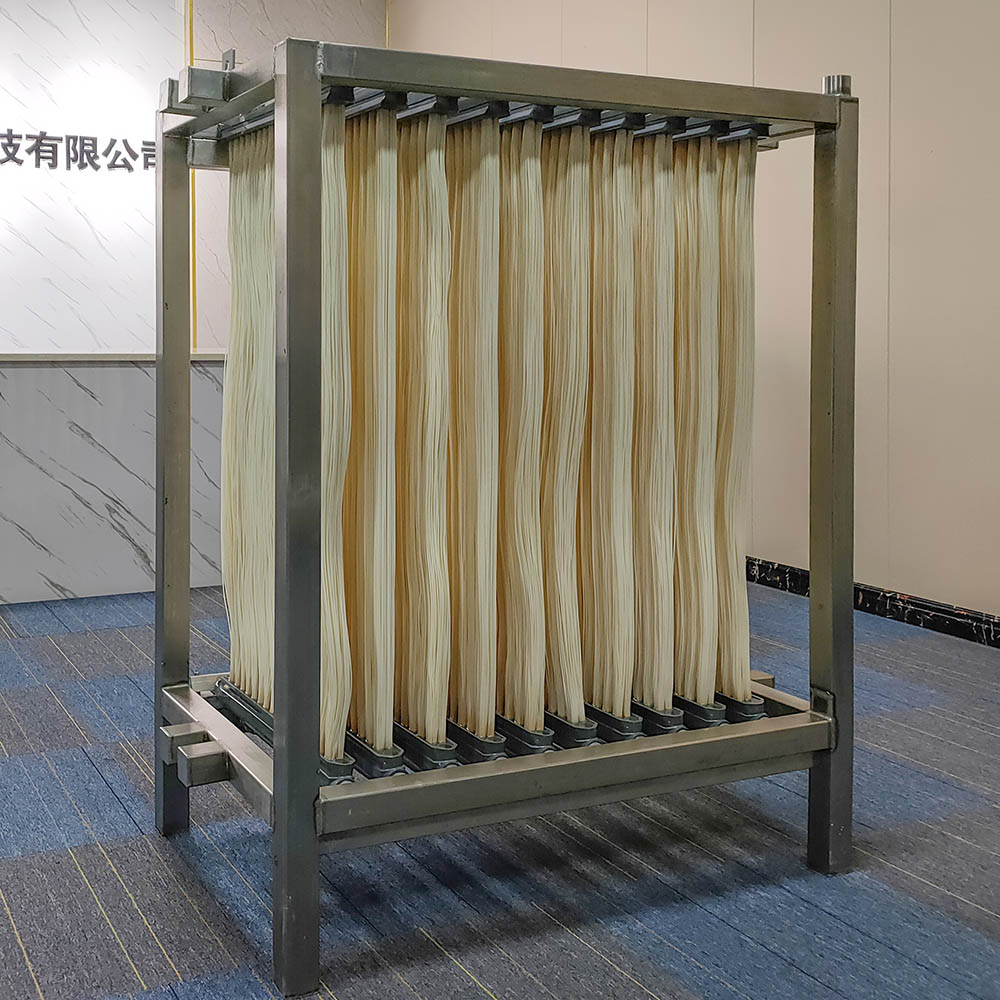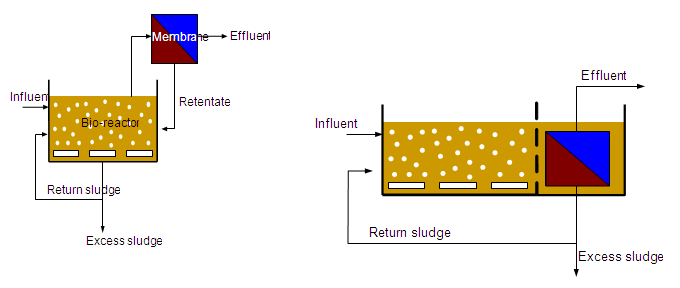The Role of Membrane Bioreactor in Achieving Higher Effluent Quality Standards
The Role of Membrane Bioreactor in Achieving Higher Effluent Quality Standards
Blog Article
Exactly How Membrane Bioreactors Are Revolutionizing Water Filtration Equipments
The development of membrane bioreactors (MBRs) stands for a considerable advancement in the field of water purification, merging organic treatment procedures with advanced membrane layer purification technologies. This integration not only boosts the high quality of treated effluent but additionally addresses city space constraints, making MBRs specifically appropriate for largely inhabited locations. As international water deficiency intensifies, the role of MBRs in helping with safe and clean water reuse and lasting water administration becomes increasingly essential. Yet, the ramifications of this technology extend past effectiveness-- what obstacles and chances lie ahead for its extensive application?
Introduction of Membrane Bioreactors
Membrane bioreactors (MBRs) represent a considerable innovation in water purification modern technology, as they integrate biological treatment procedures with membrane layer filtration. This assimilation enhances the effectiveness of wastewater therapy by utilizing microorganisms to deteriorate organic toxins while simultaneously employing semi-permeable membrane layers to different cured water from suspended solids and pathogens.
The MBR system normally includes a biological activator where the microbial population metabolizes impurities, adhered to by a membrane filtering device that preserves biomass and enables only tidy water to travel through. This double capability leads to greater effluent top quality compared to conventional therapy techniques. MBRs can be operated in both set and constant circulation settings, using flexibility in design and application.
They likewise make it possible for the recuperation of water for reuse, thus contributing to water sustainability initiatives. In general, MBRs are at the leading edge of boosting water therapy efficiency and quality, showcasing the capacity for innovative services in environmental administration.
Benefits of MBR Modern Technology
The assimilation of organic treatment with membrane layer purification supplies numerous benefits for water filtration procedures. Among the key advantages of Membrane layer Bioreactor (MBR) modern technology is its capacity to properly eliminate both not natural and natural pollutants, causing top quality effluent. The membrane layers function as a physical barrier, avoiding suspended solids and pathogens from passing through, which improves the total security and dependability of treated water.
Additionally, MBR systems require a smaller sized footprint compared to standard therapy techniques, allowing for more reliable space utilization. This compact layout is especially beneficial in urban setups where land is limited. MBRs likewise demonstrate functional versatility, accommodating differing influent high qualities and flow prices without significant efficiency deterioration.
Moreover, the process provides enhanced nutrient elimination capabilities, specifically for nitrogen and phosphorus, which are essential for stopping eutrophication in obtaining waters. The minimized sludge production connected with MBR innovation also converts to lower disposal costs, making it an affordable solution in the future - Membrane Bioreactor. In general, the benefits of MBR technology placement it as a leading selection for ingenious and lasting water purification systems, attending to both environmental and economic problems
Applications in Water Purification
Applications of Membrane Layer Bioreactor (MBR) modern technology in water purification are varied and impactful, addressing different therapy needs across numerous sectors. MBRs effectively integrate organic treatment processes with membrane layer filtration, making them optimal for community wastewater therapy, industrial effluent administration, and also safe and clean water reuse initiatives.
In local setups, MBRs are significantly employed to enhance the quality of treated wastewater, enabling conformity with stringent discharge regulations and helping with the recycling of water for irrigation and non-potable uses. Their compact design additionally makes them suitable for urban environments where room is restricted.
Industrially, MBR modern technology is made use of to treat process water and wastewater, particularly in sectors such as food and beverage, drugs, and fabrics. By properly eliminating contaminants get redirected here and put on hold solids, MBRs aid sectors lessen ecological effects while recouping important sources from wastewater streams.
Additionally, MBRs are getting grip in decentralized water therapy applications, where small-scale systems can be deployed in remote locations or establishing regions. This flexibility allows communities to achieve lasting water administration services, improving accessibility to clean water while decreasing dependence on typical treatment methods.
Study and Success Stories

In an additional instance, a textile production facility in Bangladesh took on MBR innovation to resolve its wastewater difficulties. The system reduced chemical oxygen need (COD) levels from 1,200 mg/L to much less than 100 mg/L, thus satisfying regulatory requirements and considerably decreasing environmental influence.
The University of Cape Community's MBR installation has actually proven efficient in treating greywater for non-potable reuse on school. This project not just preserves drinkable water yet also works as an instructional model for lasting practices.
Additionally, a fish and shellfish processing plant in Norway used MBR modern technology to treat effluents having high levels of raw material, achieving over 90% pollutant elimination. These instance research studies emphasize MBR technology's adaptability and its essential role in improving water high quality throughout diverse applications.
Future of Water Treatment Solutions
As worldwide water shortage and air pollution challenges heighten, ingenious water therapy remedies are becoming progressively important to ensure sustainable access to clean water. The future of water treatment depends on the combination of innovative modern technologies that improve the effectiveness and efficiency of purification processes. Membrane layer bioreactors (MBRs) are at the forefront of this evolution, integrating biological treatment with membrane purification to generate top quality effluent suitable for various applications.

Emerging trends such as resource recuperation from wastewater, consisting of nutrients and energy, will further change therapy facilities into eco-friendly centers. In addition, advancements in nanotechnology and membrane products guarantee improved performance and long life of filtering systems.

Conclusion
To conclude, membrane bioreactors stand for a considerable development in water filtration innovations, effectively integrating biological therapy with advanced membrane layer purification. The various benefits, including enhanced effluent quality and minimized spatial requirements, make MBRs especially suitable for metropolitan applications. Their function in safe and clean water reuse and sustainable water monitoring highlights their significance in resolving global water shortage obstacles. Continued study and advancement will additionally enhance the effectiveness and fostering of MBR technology, making sure a resistant future for water treatment solutions.
The emergence of membrane bioreactors (MBRs) represents a considerable development in the field of water filtration, combining organic therapy procedures with advanced membrane layer filtering modern technologies. As international water deficiency escalates, the duty of MBRs over here in promoting potable water reuse and lasting water administration ends up being progressively vital. They likewise allow the healing of water for reuse, therefore contributing to water sustainability initiatives.As global water deficiency and contamination challenges magnify, innovative water treatment remedies are coming to be significantly necessary to make sure sustainable accessibility to tidy water. Their function in potable water reuse and lasting water monitoring highlights their value in dealing with global water deficiency obstacles.
Report this page